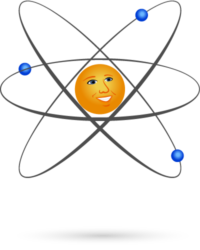Standards
Idaho State Standards
Here are correlations to the Idaho State Language and Math standards and to the Idaho State Science Standards. For more information about the overall standards, see the complete Idaho Content Standards for Science, the Next Generation Science Standards, and the alignment between Idaho and NGSS Science Standards. You may also access the Idaho English Language Arts/Literacy Standards and Mathematics Standards.
Language
Third Grade
ELA/Literacy 3.RS.IP.1
Conduct short research tasks to take some action or share findings orally or in writing by gathering and recording information on a specific topic from reference texts or through interviews, and using text features and search tools (e.g., key words, sidebars, hyperlinks) to locate information efficiently.
Suggested Lesson
List three sources of energy, one of them being nuclear, and write a sentence about each, explaining one characteristic of each source.
Fourth Grade
ELA-4.VD.WB.1
Determine or clarify the meaning of unknown and multiple-meaning words and phrases based on grade level content, choosing flexibly from a range of strategies.
Suggested Lesson
From a list of nuclear energy related vocabulary words, students draw a picture to illustrate the words and write a definition of each term.
Sixth Grade
ELA-6.RC.NF.6d
Trace the argument and specific claims in a text, distinguishing claims that are supported by evidence and reason from claims that are not.
Suggested Lesson
Read this article on nuclear energy and fill in the chart provided, listing benefits and risks of nuclear energy. Decide how each fits into the three categories (economic, environmental, or social/cultural) and back up each claim with evidence.
Math
Third Grade
Math-3.OA.D.8
Solve two-step word problems involving whole numbers using the four operations.
a.Represent these problems using equations with a letter standing for the unknown quantity.
Suggested Lesson
Students figure out the number of protons, neutrons, and electrons in an atom such as uranium, when given one of the variables and the atomic number.
Fourth Grade
Math-4.NBT.B.4
Fluently use the standard algorithm for multi-digit whole-number addition and subtraction.
Suggested Lesson
Using the Powering Smallsville activity, students calculate how much power is needed, how much it will cost, how much power is provided by the power source, and how much of the budget money will be used.
Sixth Grade
Math-6.RP.A.3.C
Find a percent of a quantity as a rate per 100; solve problems involving finding the whole, given a part and the percent.
Suggested Lesson
For several countries, calculate what percentage of a nation's energy needs is provided by nuclear power.
Science
Fourth Grade
Earth and Space Sciences: Earth and Human Activity 4-ESS-3.1
Obtain and combine information to describe that energy and fuels are derived from natural resources and their uses affect the environment.
Supporting Content
Examples of renewable energy resources could include wind energy, water behind dams, and sunlight; non-renewable energy resources are fossil fuels and atomic energy. Examples of environmental effects could include biological effects from moving parts, erosion, change of habitat, and pollution.
Physical Sciences: Energy 4-PS-1.2
Make observations to provide evidence that energy can be transferred by heat, sound, light, and electric currents.
Supporting Content
Energy is present whenever there are moving objects, heat, sound, or light. When objects collide, energy can be transferred from one object or substance to another in the form of heat, thereby changing their motion.
Energy can be transferred from place to place by electrical currents, which can then be used locally to produce motion, sound, heat, or light. The currents may have been produced by transforming the energy of motion into electrical energy.
Sixth Grade - Middle School
Earth and Space Sciences: Earth and Human Activity MS-ESS-3.3
Apply scientific practices to design a method for monitoring human activity and increasing beneficial human influences on the environment.
Supporting Content
Examples of the design process include examining human interactions and designing feasible solutions that promote stewardship. Examples can include water usage (such as stream and river use, aquifer recharge, or dams and levee construction); land usage (such as urban development, agriculture, wetland benefits, stream reclamation, or fire restoration); and pollution (such as of the air, water, or land).
